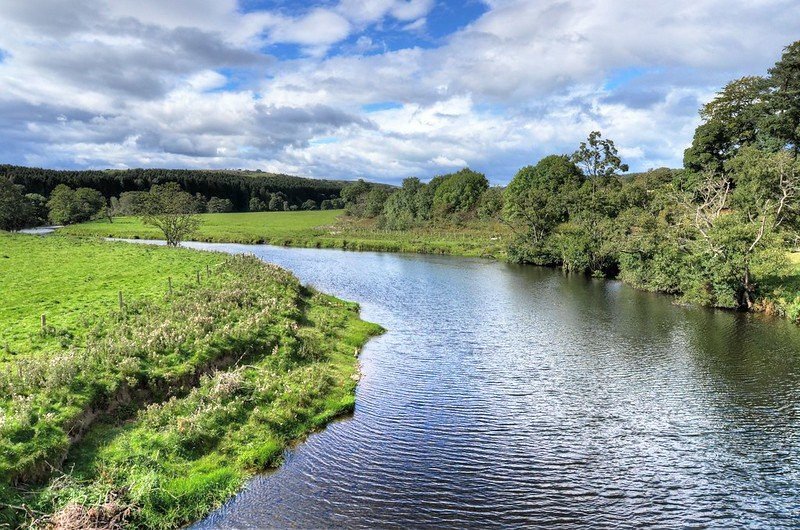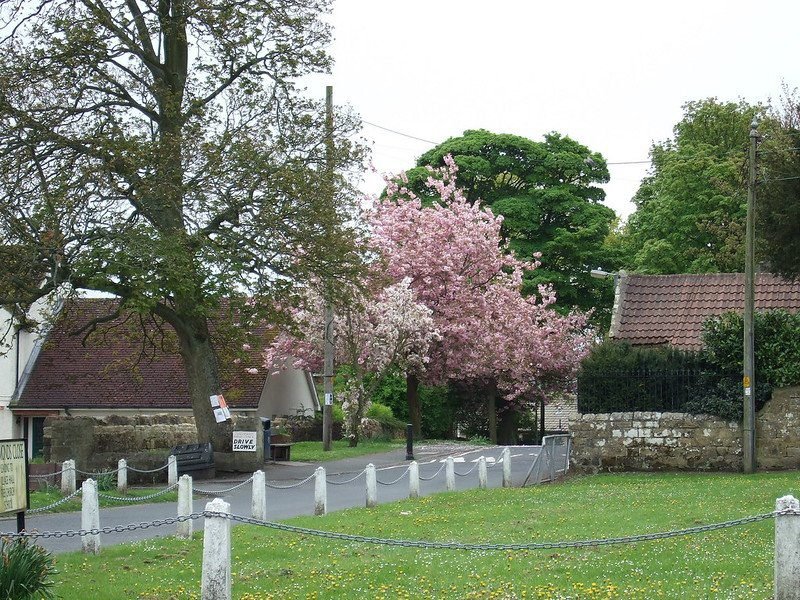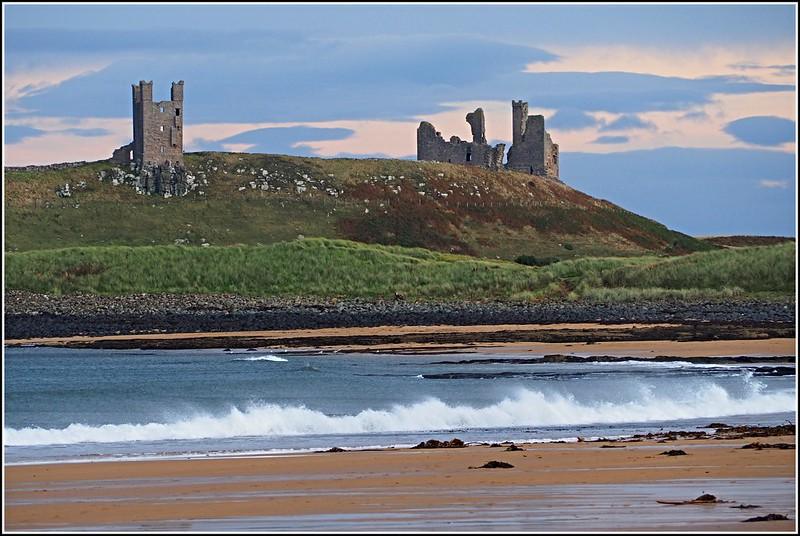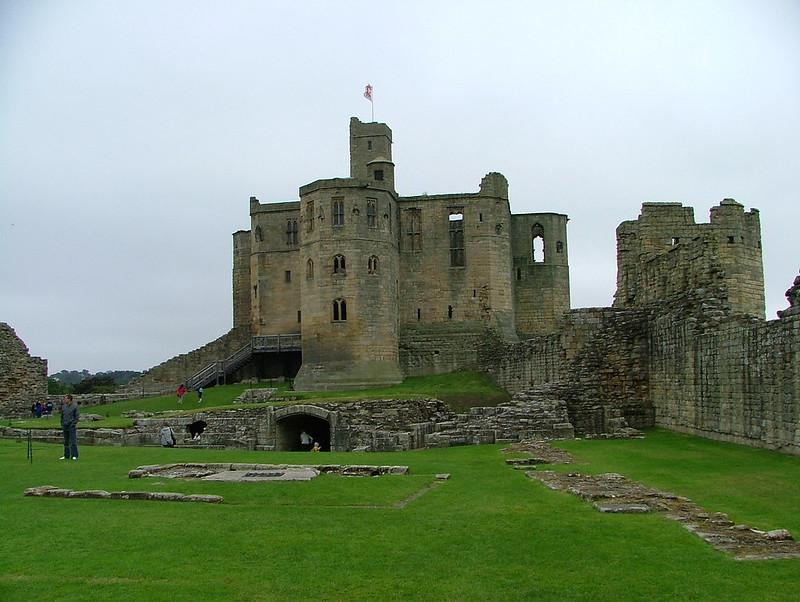Introduction to the River Coquet
The River Coquet is a prominent waterway located in the picturesque region of Northumberland, England. Stretching approximately 64 kilometres, it meanders through a diverse range of landscapes, from the rugged hills of the Northumberland National Park to the tranquil coastal areas at Amble. The river's source is found near the village of Harbottle, where the waters emerge from the Cheviot Hills, eventually flowing into the North Sea. The journey of the River Coquet is not only significant geographically but also ecologically and historically, making it a vital component of the Northumberland landscape.
From a historical perspective, the River Coquet has shaped human activity in the region over the centuries. Its strategic location has facilitated trade, transport, and communication among communities. Settlements along the river have thrived due to the fertile lands and access to fresh water, which have been instrumental in supporting local agriculture. Furthermore, remnants of ancient structures, like the significant castles and churches along its pathway, reflect the river's influence on Northumberland's cultural heritage. The River Coquet embodies a rich tapestry of natural beauty and historical significance, making it an essential part of Northumberland's identity.

Outdoor Activities and Recreation
The River Coquet offers an abundance of outdoor activities that cater to nature enthusiasts and thrill-seekers alike. One of the most popular pastimes is fishing, with the river being renowned for its salmon and trout populations. The best times for fishing are typically from spring through early autumn, with local fisheries providing both guided tours and equipment rental services to enhance the experience. Anglers can find numerous designated fishing spots along the river, allowing for a peaceful day immersed in the beautiful landscape.
Kayaking is another exhilarating way to explore the River Coquet. The diverse scenery and gentle current make it suitable for both beginners and experienced paddlers. There are various points along the river where kayak rentals are available, particularly in the vicinity of Rothbury. Paddling the river not only provides an excellent workout but also offers unique vantage points for experiencing the stunning Northumberland countryside.
For those who prefer land-based activities, hiking trails or paths alongside River Coquet are abundant. One particularly notable route is the Coquet Valley walk, which showcases picturesque views and tranquil woodlands. Hikers will find the trails well-marked and suitable throughout the year, although the late spring and early autumn months generally offer the most pleasant weather conditions for long walks.
Birdwatching is yet another captivating pursuit along the river. The diverse habitats attract a wide variety of bird species, making it a haven for both amateur and experienced birdwatchers. Popular birdwatching spots include the areas around the riverbanks and natural reserves nearby, where one can observe species ranging from waders to woodland birds.
As with any outdoor activity, safety is paramount. It is advisable for participants to familiarise themselves with the local guidelines and conditions, particularly during harsher weather months. With the right preparation, the River Coquet can provide individuals with unforgettable outdoor adventures, whether by fishing, kayaking, hiking, or birdwatching.

Wildlife and Natural Environment
The River Coquet, meandering gracefully through Northumberland, is not merely a waterway; it is a vibrant ecosystem teeming with diverse wildlife and plant species. This beautiful river serves as a habitat for various migratory birds, including the graceful sandpiper and the striking kingfisher. Birdwatchers from all corners flock to the river’s banks during migration seasons, hoping to catch a glimpse of these fascinating creatures as they navigate their routes. Additionally, the river is home to a variety of fish species, including salmon and trout, which attract anglers enthusiasts eager to experience the thrill of fishing in such pristine surroundings.
The surrounding flora is equally impressive, featuring an array of plants native to the region. These include the delicate marsh marigold by the riverbanks, along with a variety of reeds that serve as essential habitats for numerous insects and small animals. The biodiversity of the River Coquet area is a testament to the health of its natural environment, providing essential ecosystem services that benefit not only wildlife but also the local community.
Conservation efforts play a crucial role in maintaining the delicate balance of this ecosystem. Various organizations are dedicated to preserving the habitats around the River Coquet, implementing programs aimed at protecting endangered species and ensuring that the river remains a sanctuary for wildlife. Initiatives such as clean-up days and habitat restoration projects allow visitors to engage actively in preserving this natural gem. By participating in these activities, individuals can contribute to the ongoing efforts to protect the river's unique biodiversity and promote a sustainable future for the flora and fauna that call it home.

Cultural Significance and Local Communities
The River Coquet holds a deep-seated cultural significance for the communities residing in its vicinity. Historically, the river served as a vital resource for agriculture, providing irrigation and a means for transport of goods. This connectivity contributed significantly to the development of local towns, shaping the agricultural practices that have been the backbone of the Northumberland economy for centuries. The lush landscapes along the riverbanks have fostered a rich tapestry of agricultural heritage that is celebrated and preserved by local residents.
Beyond its economic implications, the River Coquet is steeped in folklore and traditions that enrich the local culture. Tales of mythical creatures and heroic figures predating even the earliest settlements echo through generations, showcasing the river's integral role in community storytelling. Such narratives are often celebrated during local events that promote a sense of belonging among residents. Festivals dedicated to the river, such as the Coquet Dock Festival, not only honour its historical importance but also engage the youth in cultural preservation activities, ensuring that the stories of the past are passed on to future generations.
In addition to folklore, the river plays a critical role in fostering community engagement through various events that highlight the natural beauty and environmental significance of the area. Events like river clean-up initiatives and guided nature walks promote awareness about conservation and the need to protect such natural gems. These gatherings create opportunities for locals to connect with each other and the environment, resulting in a stronger, more unified community. Thus, the River Coquet is not merely a geographical feature; it is a vital component of the local identity that continues to inspire pride and a sense of stewardship among its inhabitants.
FAQs
Where is the River Coquet located?
The River Coquet is located in Northumberland, England. It flows from the Cheviot Hills near the Scottish border, through the village of Rothbury, and finally reaches the North Sea at Amble.
How long is the River Coquet?
The River Coquet is approximately 40 miles (64 kilometres) long, making it one of the major rivers in Northumberland.
What wildlife can be found along the River Coquet?
The River Coquet is known for its diverse wildlife, including salmon, trout, otters, and various bird species such as dippers, kingfishers, and herons. The river is especially popular among anglers for its salmon and trout fishing.
Are there any historic sites along the River Coquet?
Yes, the River Coquet passes several historic sites, including Warkworth Castle, a medieval fortress located near the river's mouth. The river also runs near several ancient bridges and churches that add to the area's historical significance.
Can you canoe or kayak on the River Coquet?
Canoeing and kayaking are allowed on certain sections of the River Coquet. However, it's important to respect private fishing rights and local regulations. Some parts of the river are popular for whitewater kayaking, especially during high water levels.
Does the River Coquet have any environmental protections?
The River Coquet is recognized for its environmental value, with parts of the river designated as a Site of Special Scientific Interest (SSSI). This status helps protect its diverse ecosystems and habitats.
Is swimming allowed in the River Coquet?
While swimming is not prohibited, the River Coquet has cold and fast-moving water in certain areas, which can be dangerous. It is important to exercise caution and be aware of the local conditions before swimming.



